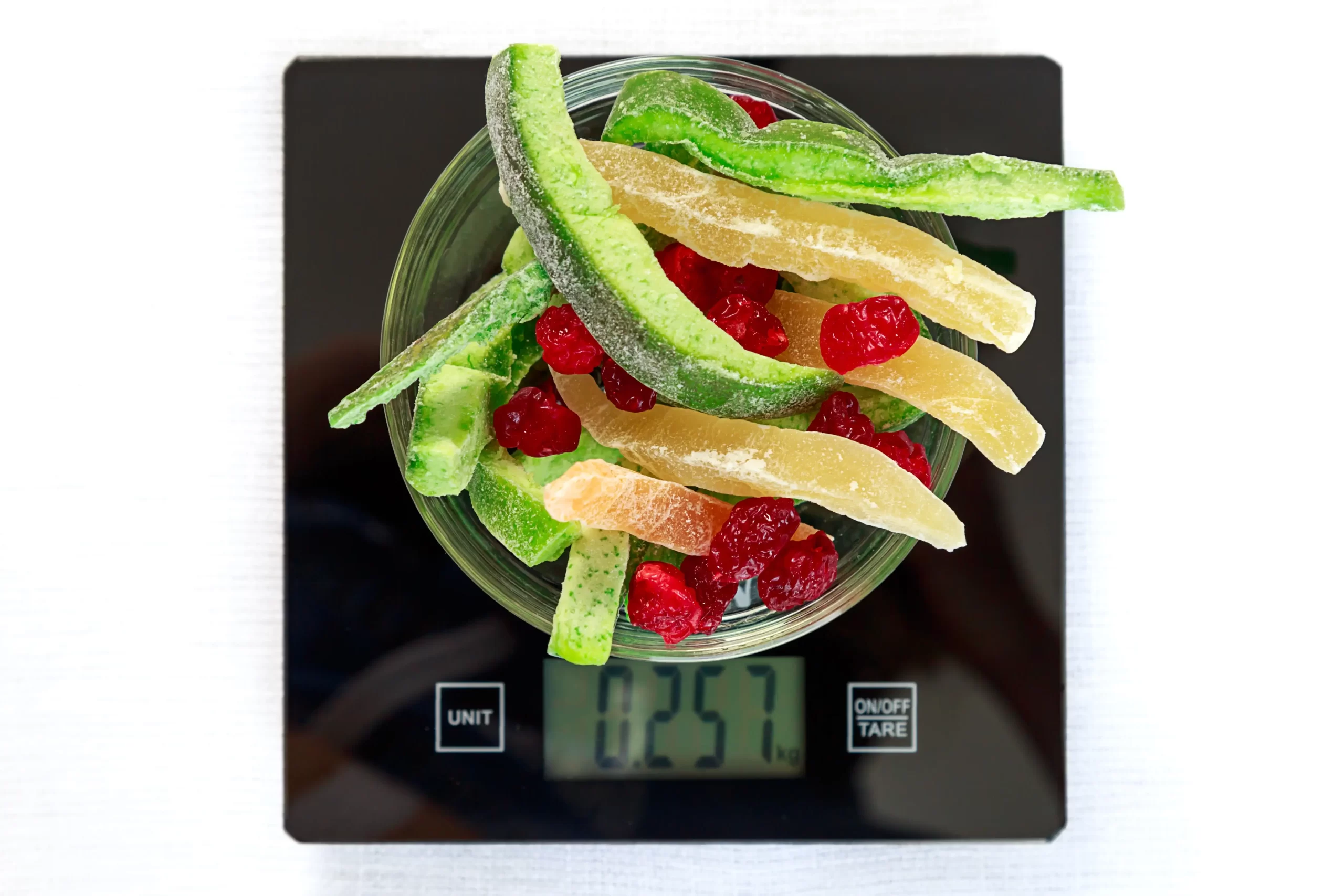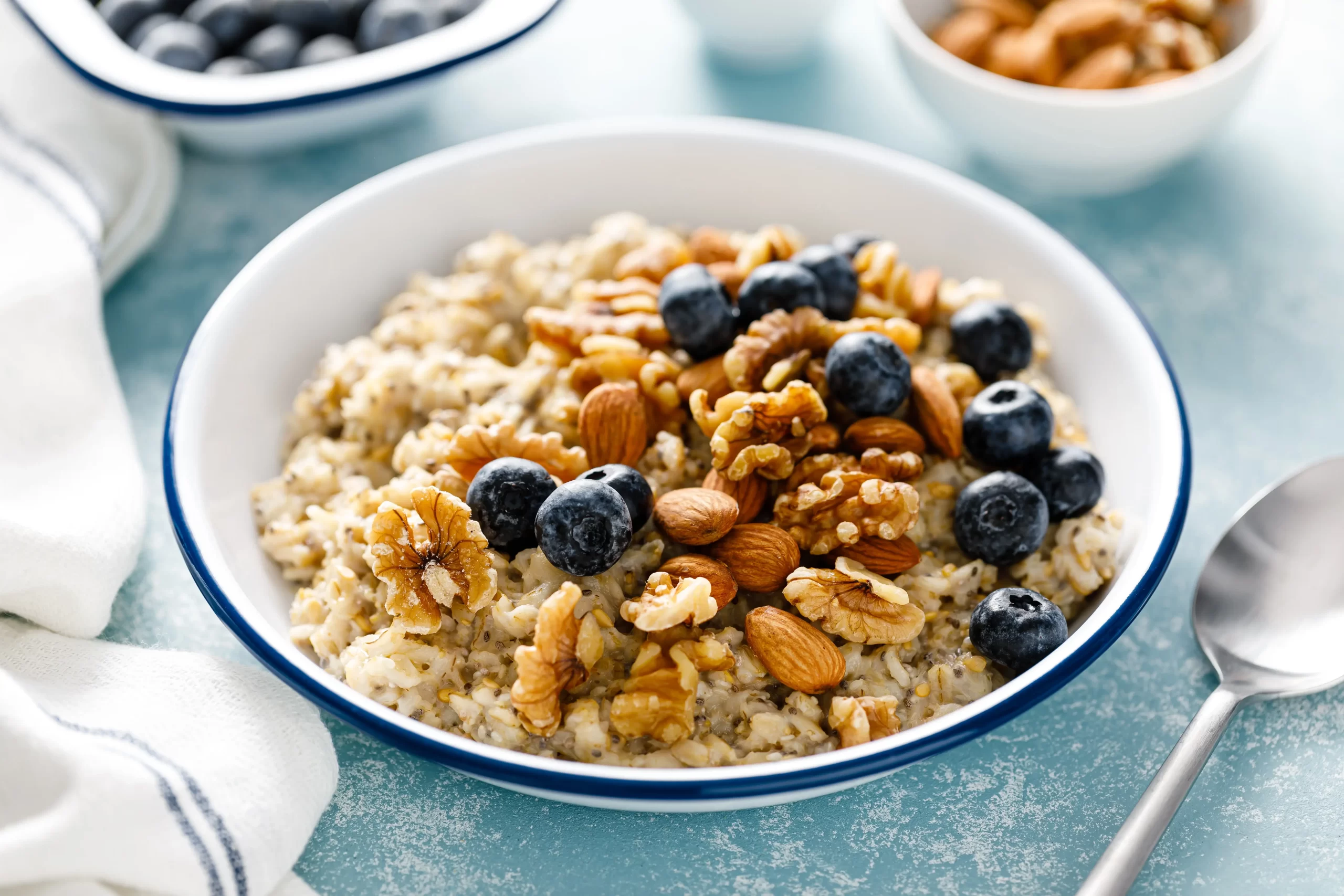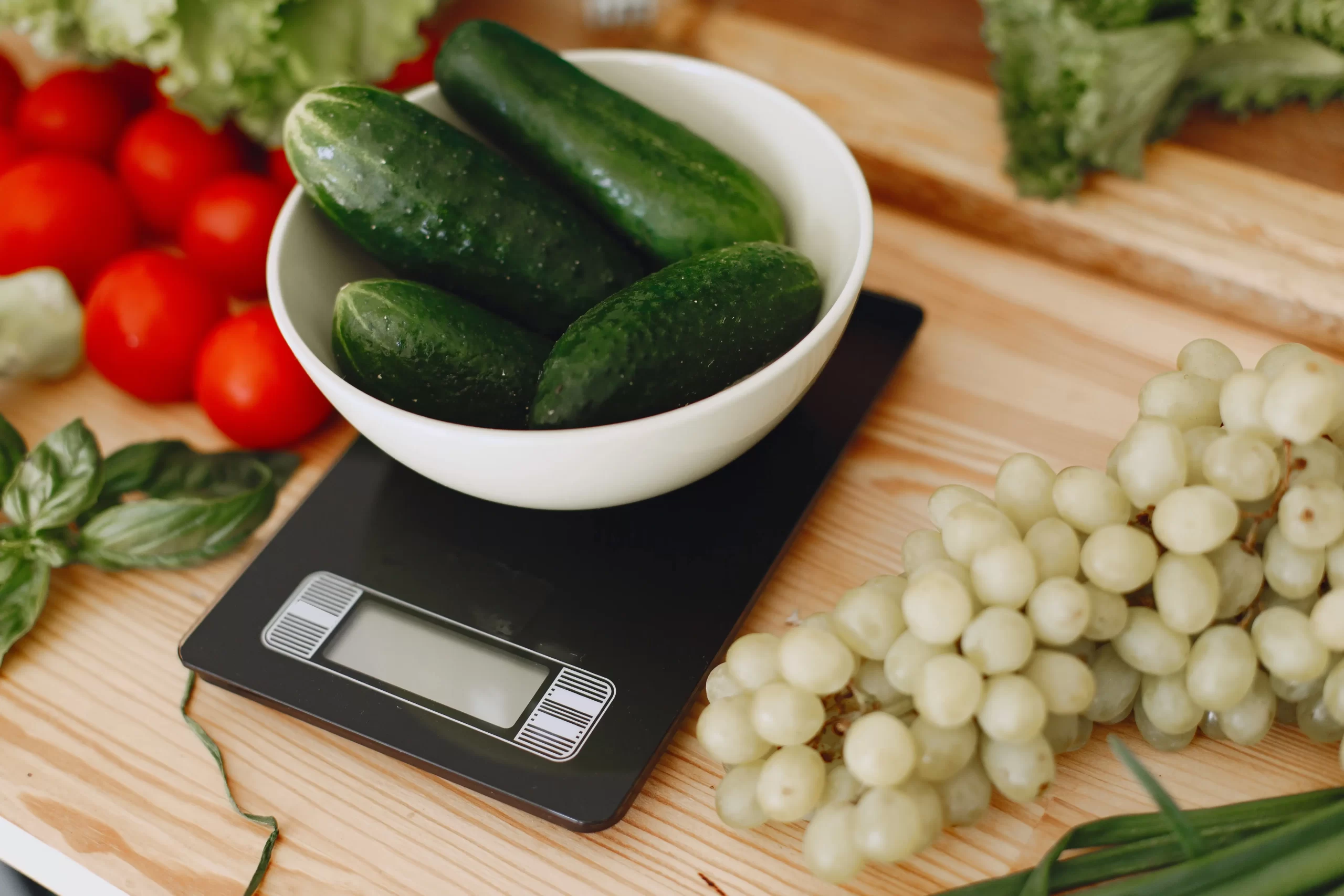Semaglutide Diet Plan for Weight Loss Success

You’ve tried intermittent fasting, walking several miles daily, living a healthy lifestyle, exercising regularly, and following countless diets in a bid to shed some pounds. But surprisingly, the weight is still there. Frustrating?
If this sounds familiar, first of all, I am very sorry. It happens. Losing weight is not easy for some. You just need to switch gears and maybe try semaglutide and follow a semaglutide diet plan.
Semaglutide is a medication known commercially and marketed under different names, such as Ozempic or Wegovy. It mimics your hormones to suppress hunger, promote feelings of fullness, and decrease appetite. Essentially, it helps manage your crazy cravings. Besides, it improves your blood pressure and cholesterol levels.
But semaglutide is not some magic drug. In fact, there is an ongoing debate on whether you should take or not take it for weight loss. Today, we are not going to debate that.
Today, the emphasis is that there is no magic when it comes to weight loss. Semaglutide works best when combined with a healthy diet that includes nutritious foods and a healthy lifestyle that includes regularly working out. You have to change your lifestyle; there is no shortcut. Even with semaglutide, you have to embrace a holistic approach to wellness.
Now, our goal here is to guide you through creating a semaglutide diet plan, complete with meal ideas that promote weight loss success.

Key Takeaways:
- Following a semaglutide diet plan enhances weight loss success when on semaglutide.
- Semaglutide works by mimicking hormones that regulate feelings of fullness and decreasing appetite.
- A balanced diet includes non-starchy vegetables, lean proteins, whole grains, and fruits.
- Avoid fried foods, sugary drinks, and foods high in added sugars for optimal weight loss.
Semaglutide for Weight Loss
Okay, How does it work?
Are you always hungry? Semaglutide helps you feel fuller for longer. And in the long run, you achieve your weight loss goals.
If you’re struggling with obesity-related issues, semaglutide can also help improve your blood sugar control. It lowers levels of hemoglobin A1C in people with type 2 diabetes.
The exact mechanism of Semaglutide
Semaglutide, as a GLP-1 receptor agonist, works by binding to GLP-1 receptors in your brain and other organs. This binding process triggers various physiological responses that aid in weight loss.
- Semaglutide suppresses your appetite signals. You experience reduced hunger and cravings.
- Semaglutide also slows down stomach emptying, so you feel full and satisfied after eating a smaller portion of food.
- Semaglutide influences the release of insulin from the pancreas, regulating blood sugar levels. By increasing insulin sensitivity in tissues, it allows for better glucose uptake by cells, reducing hyperglycemia.
These combined effects make semaglutide an effective tool for weight loss and diabetes management.

| Benefits of Semaglutide for Weight Loss |
|---|
| Effective appetite suppression |
| Improved blood sugar control |
| Lower hemoglobin A1C levels |
| Reduced cravings and hunger |
| Enhanced feelings of fullness |
| Weight management support |
NOTE: The Importance of a Doctor’s Consultation
Consult with a healthcare professional before starting semaglutide. They will consider factors like blood sugar levels and per kilogram of your body weight to determine if semaglutide is right for you.
Principles of a Semaglutide Diet Plan
Okay, the reason you are here.
When taking semaglutide, whether it’s Ozempic or Wegovy, a thoughtful diet approach is critical to making the most of your semaglutide treatment.
Besides, these dietary changes will help you maintain the weight when you come off semaglutide.
1. Caloric Deficit
A caloric deficit means eating fewer calories than your body burns. This is very important for any weight loss strategy.
Just don’t try to cut calories too drastically. A diet too low in calories can harm your metabolism and overall health. Target a moderate deficit that supports weight loss without depriving your body of energy.
2. Macronutrient Balance
Your body needs a mix of proteins, healthy fats, and carbohydrates to function well.
- Proteins keep you full longer and are essential for muscle repair and growth. Always include a good protein source in each meal.
- Healthy fats, found in foods like avocados and nuts, support your hormone health and provide energy.
- Low-glycemic index carbohydrates come from whole grains, legumes, and vegetables. You need them to maintain stable blood sugar levels.
RELATED ARTICLE: THE ENORMOUS POWER OF HIGH-PROTEIN MEALS FOR WEIGHT LOSS
3. Hydration
Hydration is like your job when on semaglutide. Water helps flush toxins from your body, aids digestion, and can reduce feelings of hunger.
So, aim for at least 8 glasses a day. Remember that needs can vary based on your body weight and activity level.
4. Dietary Fiber
More fiber means less space for unhealthy foods. Fiber helps you feel full and keeps your digestive system running smoothly.
Take high-fiber foods, including vegetables, fruits, whole grains, and legumes. They can also help prevent constipation, a common side effect of the medication.
RELATED ARTICLE: HIGH FIBER FOODS AND RECIPES
Why a Balanced Diet is Very Important on Semaglutide
Eating a balanced diet is crucial when taking semaglutide for weight loss.
The medication is associated with gastrointestinal (GI)-related side effects. So, choose foods that are easy to digest and do not exacerbate these symptoms.
The number of calories per day will vary for each individual, but the focus should be on the quality of food rather than hitting an exact number.
In short, include non-starchy vegetables, lean proteins, whole grains, and healthy fats. And avoid the usual culprits including high-fat and processed foods because they are harder to digest and may contribute to GI symptoms.
Also, stay hydrated and eat small, frequent meals if nausea or bloating is an issue.

Foods to Include/ Eat while on Semaglutide
What foods should I eat?
Eat foods that provide essential nutrients while being low in calories and unhealthy fats.
Some of the best foods to eat while taking semaglutide include:
- Lean protein sources, including chicken breasts, eggs, and beans
- All kinds of vegetables, especially leafy greens, mushrooms, and zucchini
- Whole grains such as brown rice, quinoa, and millet
- Low- or non-fat dairy like milk, Greek yogurt, and cottage cheese
- Fruits, especially berries, apples, and oranges
Foods to Avoid on a Semaglutide Diet Plan
Avoid all these guilty-pleasure foods:
Foods to Avoid on a Semaglutide Diet Plan
| Foods to Avoid | Reasons to Avoid |
|---|---|
| Fried foods | High in unhealthy fats, difficult to digest |
| Ice cream and other high-fat desserts | High in unhealthy fats and added sugars |
| Alcohol | High in empty calories and may trigger side effects |
| Candy and other sweets | High in added sugars and contribute to weight gain |
| Soda and sugary drinks | High in added sugars and empty calories |
| Highly processed cereals | Contain unhealthy fats and added sugars |
| Pre-packaged foods | Often high in unhealthy fats, sugars, and additives |
| Refined grains such as white bread | Lack essential nutrients and contribute to weight gain |
Tips for Maximizing Weight Loss When Taking Semaglutide
To maximize weight loss with semaglutide, it is important to follow a few tips.
- Eat several small meals throughout the day to manage side effects like nausea and bloating
- Stay hydrated by drinking plenty of water
- Choose low-sugar, high-fiber carbohydrates such as whole grains, fruits, and vegetables.
- Include lean proteins such as chicken, fish, tofu, and legumes.
- Incorporate regular physical activity into your daily routine
- Minimize stress through relaxation techniques, exercise, and self-care
- Get enough sleep to support weight loss and overall health

How to Prepare for the Semaglutide Meal Plan
Mental and Physical Preparation
Starting semaglutide and embracing a healthy semaglutide diet plan isn’t just about changing what you eat.
It’s about changing how you live.
Understand that weight loss is a gradual process. So, prepare yourself mentally to make the journey smoother.
Setting Realistic Weight Loss Goals
Set specific, measurable, attainable, relevant, and time-bound (SMART) goals.
Rather than aiming for a quick fix, focus on long-term changes to your diet and lifestyle. This approach will lead to sustainable weight loss well beyond Semaglutide.
Tracking Progress
Don’t monitor your progress by just stepping on the scale. Check other tracking metrics, such as body measurements, energy levels, and how your clothes fit.
Also, keep a food diary to better understand your eating habits and to help you adjust your plan for optimal results.
Adjusting to Appetite Changes
Semaglutide significantly reduces appetite. You’ll love the transition. Mindful eating will be very beneficial for you. Listen to your body and eat when you’re truly hungry.
Benefits of Semaglutide Diet Plan
Prevention and Management of Side Effects Associated with Semaglutide
Semaglutide may cause gastrointestinal (GI)-related symptoms, such as nausea and bloating. A semaglutide diet plan helps you minimize these side effects. Choose foods that are easy to digest and avoid triggers.
Improved Overall Health
A semaglutide diet plan emphasizes the inclusion of nutritious foods and other principles of holistic nutrition. When you consume a balanced diet, your body gets essential nutrients to support its overall function and help maintain optimal health.
Enhanced Energy Balance
When you follow a semaglutide diet plan, you’ll notice improved energy balance, which is essential for long-term weight loss. By consuming foods that provide sustained energy and avoiding those that contribute to energy imbalances, you can achieve more consistent and steady weight loss progress that will likely continue beyond semaglutide.
Optimized Weight Loss Journey
Eat the recommended foods and avoid potential triggers to help you optimize your weight loss journey on semaglutide.

Healthy Meal Plan Ideas for Semaglutide Diet Plan
Here are some meal ideas to help you eat well while taking semaglutide.
Breakfast Ideas:
High-Protein Oatmeal with Nuts and Seeds
Have a bowl of oatmeal made with milk or a plant-based alternative for extra protein. Top it with a handful of nuts like almonds or walnuts and seeds like chia or flaxseed.
Little fun fact: This meal is high in protein and fiber, which helps manage your blood sugar levels and keeps you full longer.
Greek Yogurt Parfait with Berries and Flaxseed
Layer Greek yogurt with fresh berries and a sprinkle of flaxseed.
The berries add natural sweetness and antioxidants, while the flaxseed provides omega-3 fatty acids and fiber.

Lunch Ideas
Grilled Chicken Salad with Mixed Greens and Olive Oil Dressing
Toss mixed greens, grilled chicken breast, and your favorite vegetables for a light yet satisfying lunch. Dress it with a simple olive oil and lemon juice dressing.
Quinoa and Black Bean Bowl with Avocado and Lime
For a filling and nutritious lunch, combine cooked quinoa, black beans, avocado slices, and a squeeze of lime.
This bowl is rich in protein, healthy fats, and fiber, which aid in weight reduction and prevent constipation while taking semaglutide.
Dinner Ideas
Baked Salmon with Roasted Vegetables
Bake a salmon fillet and serve it with roasted vegetables like broccoli, carrots, and bell peppers on the side.
This meal is rich in omega-3 fatty acids, vitamins, and minerals.
Stir-Fried Tofu with Broccoli and Brown Rice
Stir-fry tofu with broccoli and serve it over a bed of brown rice for a hearty dinner.
This dish is an excellent source of plant-based protein and fiber, essential for a healthy diet and effective weight management.
Snack Ideas
Celery Sticks with Almond Butter
For a crunchy and satisfying snack, pair celery sticks with almond butter.
The snack is low in calories and contains healthy fats and protein, making it a smart choice for those trying to lose weight with semaglutide.
Cottage Cheese with Sliced Peaches
Enjoy a bowl of cottage cheese topped with sliced peaches for a refreshing and filling snack.
Cottage cheese is high in protein, while peaches add a sweet touch and provide fiber and vitamins.

To Sum Up
A semaglutide diet plan is vital for achieving weight loss success while on semaglutide. Proper dieting is essential even if you have a “shortcut” like semaglutide. In fact, lifestyle changes such as proper nutrition are the only way to maintain sustainable weight loss even when you are off semaglutide.
FAQ
What is semaglutide?
Semaglutide is a medication used for weight loss and managing obesity-related issues. It works by mimicking hormones that regulate feelings of fullness, helping to decrease appetite.
How does semaglutide work for weight loss?
Semaglutide is a glucagon-like peptide-1 (GLP-1) receptor agonist that mimics hormones involved in regulating feelings of fullness and decreasing appetite. By increasing GLP-1 levels, it triggers changes in appetite control and metabolism, making weight loss easier.
Why is a balanced diet important on semaglutide?
Following a balanced diet is important when taking semaglutide for weight loss because it supports overall health, improves energy balance, and helps manage side effects of the medication.
What foods should I include in my semaglutide diet plan?
A semaglutide diet plan should include plenty of non-starchy vegetables, lean proteins, whole grains, and fruits. These foods are nutrient-rich, low in calories, and contribute to healthy weight loss.
What foods should I avoid on a semaglutide diet plan?
It is important to avoid high-fat and processed foods, especially those with unhealthy fats like fried foods and ice cream when taking semaglutide. Foods high in added sugars, such as alcohol and foods with added sugars like candy and soda, should also be avoided.